Local food is poised for massive growth this year. It has already bloomed to nearly £4bn in annual sales, according to IGD, and now the multiples are set to ramp up their local offers in response to consumer worries about the environment, food miles, quality and provenance. But though there is plenty of scope for market growth, there are also many challenges.
It's easy to see why local appeals to consumers. As ethical and environmental concerns rise up the public agenda, it assuages their concerns about food miles and makes them feel they're supporting their local communities. And there has been a real step change in the level of commitment from the top three multiples after years of dominance by smaller players such as Waitrose, Budgens and Booths.
Asda, which was the first to open a regional hub, in Cumbria in 2002, now has eight such hubs.
Sainsbury's and Tesco opened regional buying offices in Northern Ireland and Scotland. Even Morrisons has been increasing its Welsh and Scottish ranges.
These initiatives have generated plenty of positive PR and promises of further initiatives. Tesco has declared its new offices such a success - sales of local lines have risen ten-fold - that it is rolling the idea out to five English regions and strengthening its Welsh buying team.
"We believe you cannot develop and deliver strong regional ranges without people who know and love their regions based within the regions," says Emily Shamma, head of local sourcing at Tesco.
Tesco is also stepping up its recruitment drive for local suppliers via its meet-the-buyer programme. Most recently, it took on 40 new 'artisan' food lines after a well-attended meeting at Padstow. Nearly 7,000 strictly local lines are now in Tesco stores, Shamma claims - twice as many as Sainsbury's offers.
But what counts as 'local'? Consumers may not be hung up over where local stops and regional begins, but some experts suggest an opaque definition is being exploited by the multiples. Tesco, for instance, categorises northern Irish crisp maker Tayto among its local suppliers in the province, even though they also supply own label across the UK.
The multiples, however, argue that the Waitrose model of confining 'local' to products sourced within 30 miles of the store is too prescriptive.
"Arbitrary universal definitions can do more harm than good if they either restrict the amount of business small local suppliers can do with us or the numbers of customers who can access local lines through our stores," says Shamma. "The most important issue is that you are clear on why you claim the product to be local."
Shoppers each have their own definition of local and understand the offer in supermarkets, adds James Laws, Northern Ireland commercial manager at Sainsbury's.
Despite the fairly loose interpretation of local being applied by the multiples, there are, however, limits to how far they can take it.
For one, it complicates what in most cases are fairly centralised supply chains. Waitrose suppliers may be able to choose between delivering into the back of stores or supplying a regional depot, but the big retailers prefer small suppliers to consolidate deliveries.
Asda does this through regional hubs, such as Plumgarths in Cumbria, which collects 80 branded products from 20 suppliers. In other cases, individual producers such as Singleton's dairy in Lancashire consolidate supplies from producers as far away as Dorset.
The multiples agree 'local' produce would be processed and packed locally in an ideal world. But specialisation and industry consolidation have made that practically impossible.
And not all suppliers are keen. Some small direct suppliers complain their trucks are being kept waiting hours at supermarket distribution centres - at their own expense. One grower reckons his business had lost £12,000 from supermarket delays during a single season.
A West Country producer claims Tesco is just paying lipservice to the idea of sourcing red meat from the region. "Tesco has talked to Taste of the West and wants the cachet of the West Country name, but it's not preapred to pay a penny more for it.
"I bet Sir Terry Leahy genuinely believes Tesco stocks local and pays a premium. But as a junior buyer, you're only judged on getting the lowest-possible price."
Others argue that the multiples' push into local could have an adverse impact on suppliers.
"The multiples will have to impart knowledge to thousands of suppliers in countless categories in hundreds of stores," says Andrew Cole, director of fmcg trade marketing company Bridgethorne.
"This has the potential to undermine the whole success of local supply as that information may not be communicated effectively. Only through education and communication will the multiples be able to manage such a diverse supply base without compromising their own economies of scale."
However, the farmer behind
Asda's first local sourcing hub believes it is vital to see local from the retailer's perspective.
"Would you believe I've been into Asda to stack shelves?" asks John Geldard, MD of Plumgarths. "Being local's not enough by itself - the product's got to be top quality. If you keep putting product on shelves, sales can be static; you've got to do tastings and go in-store to tell shoppers about your product."
However successful, local sourcing by supermarkets won't be at the expense of the small retailers, believes Gareth Jones of the National Farmers' Retail and Markets Association (FARMA). "There will be a cut-off at which each trading style will find it viable to sell local. A good farm retailer will always be sharper at local sourcing than a multiple."
But as Tesco's tenfold growth in targeted local lines shows, it is the multiples that are set to reap the
biggest rewards. Whether small suppliers benefit in the long term or not, remains to be seen.nWhat is local?
Consumers have no fixed idea what local really means in terms of food. IGD research last year found that some thought local meant food from their county, others from within 30 miles and others still Scottish and British.
But probably the best accepted model is the one that Waitrose and the National Farmers' Retail and Markets Association have adopted. For a product to be local, it must be sourced within 25-30 miles of the store where it's sold.
Regional is a more fluid term, but most think of a larger area such as the West Country, East Anglia, or even Scotland.
But the consensus from the retailers is that their customers are more interested in a food's provenance than knowing it was produced near the store. It is the strong regional association of Welsh lamb or Cartmel sticky toffee pudding from Cumbria that sells products.
It's easy to see why local appeals to consumers. As ethical and environmental concerns rise up the public agenda, it assuages their concerns about food miles and makes them feel they're supporting their local communities. And there has been a real step change in the level of commitment from the top three multiples after years of dominance by smaller players such as Waitrose, Budgens and Booths.
Asda, which was the first to open a regional hub, in Cumbria in 2002, now has eight such hubs.
Sainsbury's and Tesco opened regional buying offices in Northern Ireland and Scotland. Even Morrisons has been increasing its Welsh and Scottish ranges.
These initiatives have generated plenty of positive PR and promises of further initiatives. Tesco has declared its new offices such a success - sales of local lines have risen ten-fold - that it is rolling the idea out to five English regions and strengthening its Welsh buying team.
"We believe you cannot develop and deliver strong regional ranges without people who know and love their regions based within the regions," says Emily Shamma, head of local sourcing at Tesco.
Tesco is also stepping up its recruitment drive for local suppliers via its meet-the-buyer programme. Most recently, it took on 40 new 'artisan' food lines after a well-attended meeting at Padstow. Nearly 7,000 strictly local lines are now in Tesco stores, Shamma claims - twice as many as Sainsbury's offers.
But what counts as 'local'? Consumers may not be hung up over where local stops and regional begins, but some experts suggest an opaque definition is being exploited by the multiples. Tesco, for instance, categorises northern Irish crisp maker Tayto among its local suppliers in the province, even though they also supply own label across the UK.
The multiples, however, argue that the Waitrose model of confining 'local' to products sourced within 30 miles of the store is too prescriptive.
"Arbitrary universal definitions can do more harm than good if they either restrict the amount of business small local suppliers can do with us or the numbers of customers who can access local lines through our stores," says Shamma. "The most important issue is that you are clear on why you claim the product to be local."
Shoppers each have their own definition of local and understand the offer in supermarkets, adds James Laws, Northern Ireland commercial manager at Sainsbury's.
Despite the fairly loose interpretation of local being applied by the multiples, there are, however, limits to how far they can take it.
For one, it complicates what in most cases are fairly centralised supply chains. Waitrose suppliers may be able to choose between delivering into the back of stores or supplying a regional depot, but the big retailers prefer small suppliers to consolidate deliveries.
Asda does this through regional hubs, such as Plumgarths in Cumbria, which collects 80 branded products from 20 suppliers. In other cases, individual producers such as Singleton's dairy in Lancashire consolidate supplies from producers as far away as Dorset.
The multiples agree 'local' produce would be processed and packed locally in an ideal world. But specialisation and industry consolidation have made that practically impossible.
And not all suppliers are keen. Some small direct suppliers complain their trucks are being kept waiting hours at supermarket distribution centres - at their own expense. One grower reckons his business had lost £12,000 from supermarket delays during a single season.
A West Country producer claims Tesco is just paying lipservice to the idea of sourcing red meat from the region. "Tesco has talked to Taste of the West and wants the cachet of the West Country name, but it's not preapred to pay a penny more for it.
"I bet Sir Terry Leahy genuinely believes Tesco stocks local and pays a premium. But as a junior buyer, you're only judged on getting the lowest-possible price."
Others argue that the multiples' push into local could have an adverse impact on suppliers.
"The multiples will have to impart knowledge to thousands of suppliers in countless categories in hundreds of stores," says Andrew Cole, director of fmcg trade marketing company Bridgethorne.
"This has the potential to undermine the whole success of local supply as that information may not be communicated effectively. Only through education and communication will the multiples be able to manage such a diverse supply base without compromising their own economies of scale."
However, the farmer behind
Asda's first local sourcing hub believes it is vital to see local from the retailer's perspective.
"Would you believe I've been into Asda to stack shelves?" asks John Geldard, MD of Plumgarths. "Being local's not enough by itself - the product's got to be top quality. If you keep putting product on shelves, sales can be static; you've got to do tastings and go in-store to tell shoppers about your product."
However successful, local sourcing by supermarkets won't be at the expense of the small retailers, believes Gareth Jones of the National Farmers' Retail and Markets Association (FARMA). "There will be a cut-off at which each trading style will find it viable to sell local. A good farm retailer will always be sharper at local sourcing than a multiple."
But as Tesco's tenfold growth in targeted local lines shows, it is the multiples that are set to reap the
biggest rewards. Whether small suppliers benefit in the long term or not, remains to be seen.nWhat is local?
Consumers have no fixed idea what local really means in terms of food. IGD research last year found that some thought local meant food from their county, others from within 30 miles and others still Scottish and British.
But probably the best accepted model is the one that Waitrose and the National Farmers' Retail and Markets Association have adopted. For a product to be local, it must be sourced within 25-30 miles of the store where it's sold.
Regional is a more fluid term, but most think of a larger area such as the West Country, East Anglia, or even Scotland.
But the consensus from the retailers is that their customers are more interested in a food's provenance than knowing it was produced near the store. It is the strong regional association of Welsh lamb or Cartmel sticky toffee pudding from Cumbria that sells products.








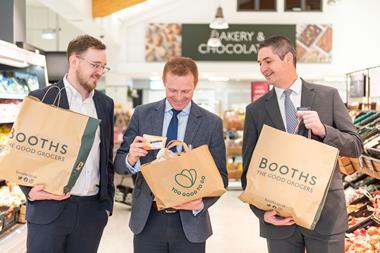
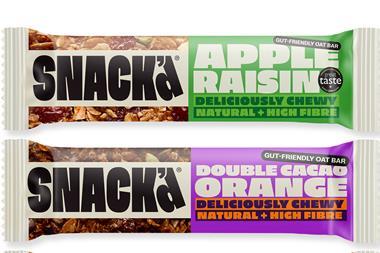
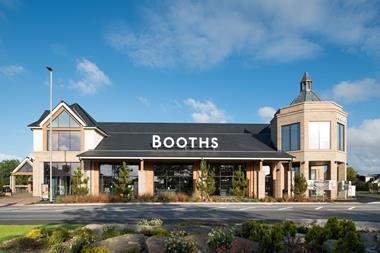



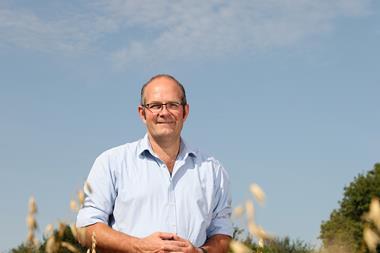

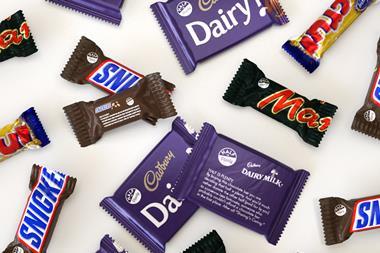


No comments yet